Gripo Log Splitter Review
- February 13, 2024
- 0 comment
Having always harbored a curiosity for kinetic wood splitters without actually trying one out, I recently seized the chance to evaluate the Gripo 200 Log Splitter firsthand. Allow me to guide you through my journey with this formidable machine, detailing everything from its specifications to its real-world performance.
Specifications of 200 Gripo Log Splitter
- Engine: Honda GX160K1QX with Oil Alert
- Total Height: 37 inches
- Width: 41 inches
- Total Length: 79 inches
- Weight: 375 lbs
- Maximum Log Length: 25-1/2 inches
- Cycle Duration: 3 seconds
- Mechanical Force: 20,000 to 28,000 lbs
- Blade Height: 6 inches
First Impressions
Straight out of the gate, the Gripo 200 impresses with its robust build. It’s equipped with a standard trailer coupler, making it easily towable at low speeds—a convenient feature for moving it around your property.
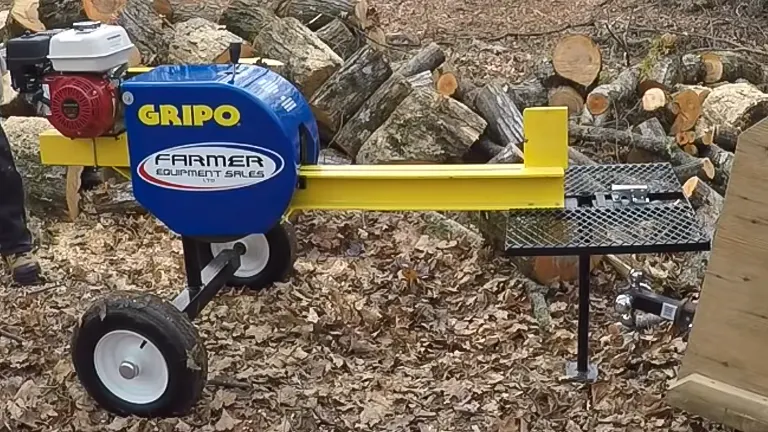
The splitter is powered by a reliable Honda GX160UTQX6 engine, promising durability and efficiency. With a weight of 375 lbs and a sturdy I-beam construction, it boasts a formidable presence. The removable table and the ability to handle logs up to 25-1/2 inches in length are additional pluses, ensuring flexibility in operation.
Getting to Work
Taking this splitter for a spin was an experience in itself. The absence of hydraulics and system components means there’s less maintenance to worry about, which is a significant advantage.

The twin heavy flywheels, powered by two drive belts, build up energy quickly. Engaging the ram unleashes up to 28,000 pounds of force, a testament to the machine’s raw power. The safety stop feature adds a layer of security, providing peace of mind during operation.
Performance Insights
The real test came when tackling some hefty maple logs. The Gripo 200’s 3-second cycle time is not just a claim; it’s a reality that enhances productivity remarkably. The kinetic energy this machine generates is astounding, slicing through logs with ease and efficiency. Its power is deceptive, considering its relatively compact and simple design. However, its performance speaks volumes, handling even the knottiest of logs without a hitch.
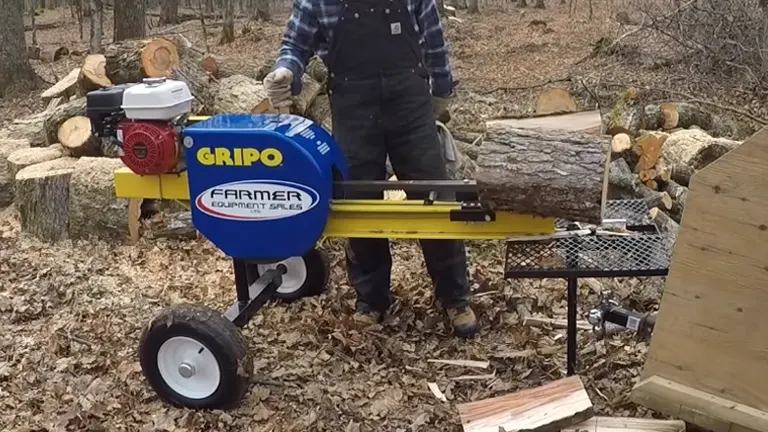
The process of loading logs and ensuring they stay in place for splitting requires a bit of technique. By positioning the rounds with the flat side down on the splitter’s table, I found they were less likely to fall off post-split. This machine made quick work of large, gnarly maple rounds, never getting caught or stuck, an impressive feat indeed.
Comparative Analysis Between Kinetic, Hydraulic, Electric, and Manual Log Splitters
| Feature | Kinetic Log Splitter | Hydraulic Log Splitter | Electric Log Splitter | Manual Log Splitter |
|---|---|---|---|---|
| Speed | Very fast (2-3 seconds) | Moderate (10-20 seconds) | Slow to moderate | Slow |
| Maintenance | Low | High (fluids, seals, hoses) | Low | Very low |
| Power & Versatility | High, struggles with knotty logs | Very high | Moderate, for smaller logs | Low |
| Cost | High initial cost | Moderate to high | Low to moderate | Lowest |
| Mobility | Good, gas-powered | Variable, often gas-powered | Limited by power source | Highly mobile |
| Noise | High | High | Low | Very low |
| Physical Effort | Low | Low | Low | High |
| Safety | High attention needed | Moderate attention needed | Moderate attention needed | Lower risk |
The choice among kinetic, hydraulic, electric, and manual log splitters should be based on individual needs and preferences:
- Kinetic Log Splitters offer unmatched speed and low maintenance, making them ideal for users with high-volume wood splitting needs who value efficiency and are willing to invest upfront.
- Hydraulic Log Splitters provide powerful and consistent performance, capable of handling a wide variety of log sizes and types. They are suited for those who need versatility and are prepared for regular maintenance.
- Electric Log Splitters are convenient for users with access to power outlets and who prioritize quiet operation and moderate splitting power, perfect for smaller logs and lighter use.
- Manual Log Splitters represent the most cost-effective and physically engaging option, best for users with minimal splitting needs or those seeking a workout.
Ultimately, the decision will depend on factors such as the typical size and volume of logs to be split, budget considerations, physical ability, and whether the splitter will be used in residential or remote locations.
Pros
- The standout advantage for me is the incredible speed at which the kinetic log splitter operates. The quick cycle time, often just a few seconds, means I can get through a pile of logs in significantly less time than with a hydraulic splitter. This efficiency is a game-changer, especially when working with large quantities of wood.
- From my experience, the kinetic log splitter requires less upkeep compared to hydraulic models. The absence of hydraulic fluids, fewer moving parts, and no hoses to worry about means I spend more time splitting wood and less time on maintenance. This simplicity is something I greatly appreciate.
- The straightforward operation of the kinetic log splitter is another pro. There’s no need for constant adjustments or monitoring pressure levels. Once the engine is running and the flywheel is at speed, it’s ready to split logs. This ease of use is ideal for both seasoned woodworkers and beginners alike.
- For someone mindful of operating costs and environmental impact, the kinetic log splitter is a win. It generally uses less fuel since it completes tasks more quickly and doesn’t rely on a hydraulic pump, making it more energy-efficient and environmentally friendly.
Cons
- One of the drawbacks is the initial investment. Kinetic log splitters tend to be more expensive upfront than many hydraulic models. This cost can be a barrier, although I find the efficiency and time savings justify the investment over time.
- While incredibly powerful, I’ve noticed that the kinetic log splitter sometimes struggles with very large or knotty logs, where a hydraulic splitter’s constant pressure might perform better. This limitation requires me to sometimes pre-cut or manually manage difficult logs before splitting.
- The very feature that makes the kinetic log splitter advantageous—its speed—also demands extra caution. The rapid action means there’s less time to react, making it imperative to maintain a safe distance and use proper safety gear. This heightened need for safety awareness is something to keep in mind.
- Depending on the model, being tethered to a gas engine for power can limit where I can use the splitter, especially in remote areas without access to electricity (for electric models) or where gas emissions are a concern. Planning around these limitations is necessary.
What is a Kinetic Log Splitter?
A kinetic log splitter is a type of wood splitting machine that utilizes kinetic energy to split logs. Unlike traditional hydraulic splitters that rely on hydraulic pressure to drive a wedge through wood, kinetic splitters use a flywheel system to accumulate and release energy rapidly. Here’s how it works and why it might be considered the best option for certain users:
How It Works
- Kinetic log splitters have one or more flywheels connected to an engine. As the engine runs, it spins these flywheels at high speeds, accumulating kinetic energy.
- When the operator engages the splitter, the stored energy in the flywheels is quickly transferred to a rack and pinion or a similar mechanism, which drives a ram. This ram forcefully pushes the log against a stationary wedge, splitting it almost instantaneously.
- One of the standout features of a kinetic log splitter is its fast cycle time. Because the splitting action is powered by the sudden release of stored kinetic energy, it can split logs in a fraction of the time it takes a hydraulic splitter, often around 2-3 seconds per cycle.
Advantages
- Kinetic splitters are significantly faster than hydraulic splitters, making them ideal for processing large quantities of wood in a short amount of time.
- They are more energy-efficient since they don’t require the constant running of a hydraulic pump. This efficiency can translate into less fuel consumption for gas-powered models.
- With fewer moving parts than hydraulic systems (no pumps, hoses, cylinders, or fluids), kinetic splitters generally require less maintenance.
- Their fast cycle times and simple operation make them user-friendly, especially for those needing to split large volumes of wood regularly.
Final Thoughts
After spending some weeks with the Gripo 200, it’s clear that this log splitter is a formidable ally in wood processing. Its quick cycle time, coupled with the mechanical force it exerts, makes short work of what would otherwise be a daunting task. Its design, emphasizing simplicity and efficiency, eliminates unnecessary maintenance while ensuring reliability and performance.
The Gripo 200 Log Splitter is not just a tool; it’s a game-changer for anyone dealing with wood splitting on a regular or even semi-regular basis. Whether it’s for preparing firewood or clearing out fallen trees, this machine proves its worth time and again. It’s a testament to the power and efficiency that kinetic splitters bring to the table. If you’re in the market for a log splitter that combines power, efficiency, and ease of use, the Gripo 200 is undoubtedly worth considering.
FAQs
- Can the Gripo 200 handle green wood as efficiently as it does dry wood?
Absolutely! The Gripo 200’s kinetic energy system is designed to tackle both green and dry wood effectively. Its powerful force ensures that even the most resilient logs are split with ease. - How does the kinetic energy system compare to traditional hydraulic splitters in terms of environmental impact?
Kinetic log splitters, like the Gripo 200, are generally more energy-efficient than their hydraulic counterparts. They consume less fuel by completing tasks more quickly and without the need for hydraulic fluid, making them a more eco-friendly choice. - Is the Gripo 200 suitable for commercial use, or is it more of a consumer-grade tool?
While the Gripo 200 is certainly powerful enough to handle large volumes of wood, making it suitable for commercial use, its ease of use, maintenance, and safety features also make it an excellent choice for personal use by homeowners or hobbyists. - Can the cycle time be adjusted for smaller or larger logs?
The cycle time is a fixed 3 seconds, optimized for the best balance between speed and power. This ensures efficient splitting of various log sizes without the need for manual adjustments. - What happens if the log isn’t completely split after the first pass?
If a log isn’t fully split, the machine’s design allows for easy repositioning of the log for another pass. The powerful force exerted by the machine ensures that even the most challenging logs can be split with an additional cycle or two.
We hope this deep dive into the kinetic log splitter has illuminated its benefits and how it might just be the game-changer you need for your wood splitting tasks. Whether you’re a seasoned pro or a curious newcomer, we’d love to hear from you! Do you have experiences with kinetic log splitters, or are you considering making the switch? Drop your thoughts, questions, or personal insights in the comments below. Your input not only enriches our community’s knowledge but helps others make informed decisions. Let’s keep the conversation going!

David Murray
Forestry AuthorI'm David Murry, a forestry equipment specialist with a focus on chainsaw operation. With over 13 years of experience, I've honed my skills in operating and maintaining a wide range of machinery, from chainsaws to log splitters. My passion for the outdoors and commitment to sustainable forestry drive my work, which emphasizes safety, efficiency, and staying updated with industry advancements. Additionally, I'm dedicated to sharing my expertise and promoting environmental awareness within the forestry community.

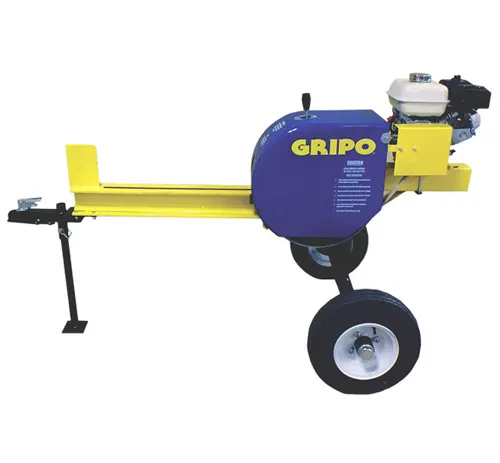
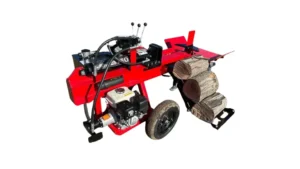

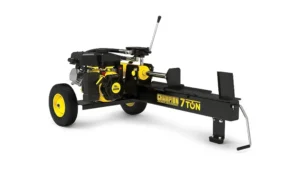
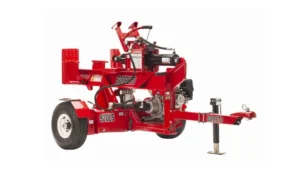
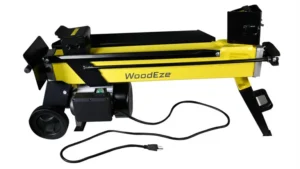
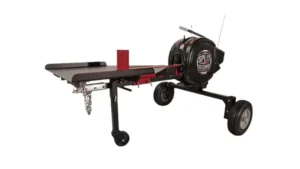
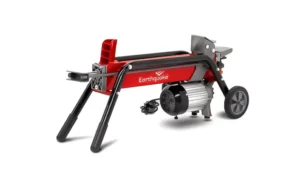

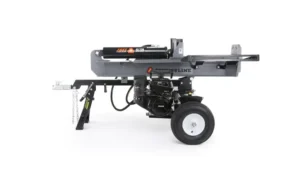
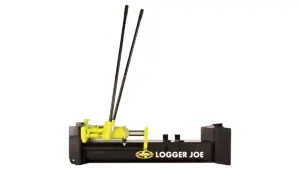

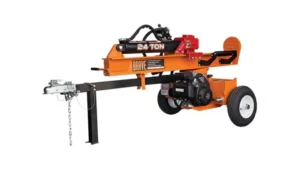
Leave your comment